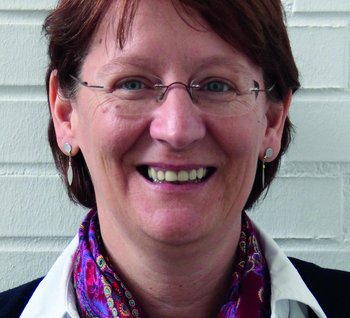Nanostructured Materials for Renewable Energies. Independent Research Group established.
Yasmin Ahmed Salem (YAS): Your group’s name is ‘Nanoanalytics and Interfaces’ – which goals do you have?
Prof. Dr. Christina Scheu (CS): Well, my group deals with the development of competitive and environmental friendly nanostructured materials for renewable energy applications. These materials have a high reactivity through a high surface area and – in combination with another material – a high interface density where e.g. charge carrier separation can take place. We synthesize and characterize these materials for photovoltaics, fuel cells and photocatalysis and clarify their structure property relation.
YAS: And on which materials do you focus?
CS: We mostly focus on nanostructured semiconducting materials and thin metallic films. Hereby we examine the material respectively the material combination as well as its morphology and structure related properties. Our main focus lies on material systems of oxides, carbides and sulphides as well as polymers and composites.
YAS: Which characterization methods do you use for the analysis of these nanostructured materials?
CS: We use various electron microscopy based techniques and focussed ion beam sectioning to investigate the morphology of the nano-structures. However, as interfaces and grain boundaries influence structural, optical and functional properties of the materials, we need also characterization methods which allow a resolution down to the atomic scale. Therefore, we especially use modern (ex-situ and in-situ) transmission electron microscopy (TEM) to examine the atomic structure, chemical com-position and bonding characteristics. The latter features are explored with electron energy-loss spectroscopy (EELS) measurements. We are also interested to explain the growth mechanisms of nanostructures with the aim of producing customised systems with high chemical stability and a low amount of defects. Thus, we use different synthesising strategies such as wet-chemical routes or physical methods like vapour phase deposition. In addition, we have strong coope-ration with different groups which synthesize nanostructured materials with various chemical approaches.
YAS: Do you have external collaboration partners?
CS: We have several cooperation partners like the universities in Munich and Constance (Germany), the Israel Institute of Technology, the National Center for Scientific Research in Marseille (France), the Massachusetts Institute of Technology and the National Center for Electron Microscopy both in the USA and also the Niels Bohr Institute in Denmark.
YAS: Your group is structured as an Independent Research Group – what are the differences compared to the other research groups at the institute?
CS: The main difference is that we have an independent status within the MPIE and do not belong to one department. This allows me to continue with the research direction, which I have started as a Professor at the Ludwig-Maximilian-University in Munich. My group benefits from the excellent infrastructure and support from the administration of the MPIE and on the same time we are building on close cooperation with all the departments of the MPIE.
Short CV
Author: Yasmin Ahmed Salem
